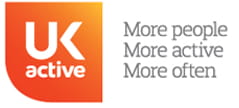If you are a team sport player, speed can be a huge advantage. It could be the difference between winning a 50/50 ball, closing down an attacker or bursting into space which creates a dangerous attack or makes that crucial interception.
When talking about speed in invasion games such as football, hockey, basketball or rugby, there are however various things to consider.
The first thing to note is that during a game such as football or hockey most players will change direction at least every five seconds. It usually takes roughly 50 metres for the average player to reach top speed, which means that in a game, unless you see a player sprinting the distance of half the pitch in a straight line, the players tend not to reach top speed. On a basketball or netball court, it will never happen.
Speed is about how fast you can sprint at maximum velocity whereas acceleration is reaching top speed as quickly as possible. Acceleration is typically the first 10-20m, even five metres, which could be the difference between gaining possession or not. In this article, when we refer to speed in team sports, we are referring predominantly to acceleration and agility.
Speed is a very broad and complex topic so here we focus on a few basic concepts to improve acceleration over a short distance.
Three primary areas which can be trained to improve acceleration. Some of these improvements can take place in the gym, while some of the training will take place outside:
1) Increase stride frequency
2) Increase stride length
3) Improve sprinting mechanics
Stride frequency refers to the number of steps taken. One method of training for stride frequency might be to sprint downhill. This is known as overspeed training, where your legs are moving quicker than they are normally able to.
Stride length methods focus on exerting more force (strength) into the ground at foot strike, although it is not just about the amount of force but also how quickly that force can be produced (power).That means a large part of acceleration comes from strength and power.
A simple way of improving acceleration is by lifting a combination of heavy and light loads and doing basic plyometrics. Ask the trainers in the gym for advice on exercises that will develop your strength and power
Here are a few guidelines for improving your speed:
You must warm up
Before doing any form of speed based training you must take at least 10-15 minutes preparing your body and mind for what you are about to do.
You must sprint at 100 per cent
In order to get faster you must sprint at 100 per cent, which means that getting enough rest between sprints becomes crucial. There is a difference between training for speed and training for endurance. As a rule, rest between each sprint until your heart rate has subsided to a resting heart rate.
Work on flexibility and mobility
The hips in particular are extremely important when it comes to speed so make sure you do plentyof mobility exercises, stretching and foam rolling.
Develop a stable core
The core is essentially the muscles which link the upper body to the lower body. Having a stable core is key to being faster, maintaining control and staying balanced. Medicine balls and stability balls are great tools for this.
You must pre-condition
Sprint training places great demand on the body so pre-conditioning is essential to prepare the body to withstand these forces. Doing too much too soon could result in injury. Make sure you have a good strength base before undergoing sprint work. Remember the stronger you are, the more force you can apply to the ground.
Sprint training shouldn’t take longer than 10-15 minutes
Always do sprint work first. Remember speed training is not about making you tired, it’s about making you faster and improving your technique
When accelerating you should aim to lean your body at a 45 degree angle to the ground, driving the foot down into the ground to create maximal force. During acceleration the foot should strike directly below or slightly behind the hips.












